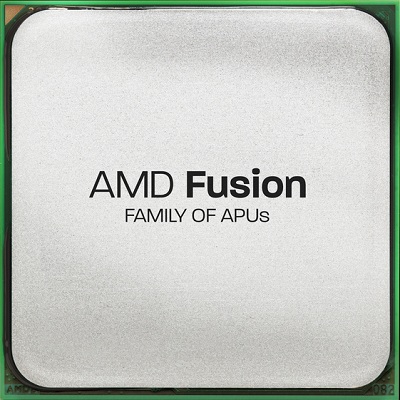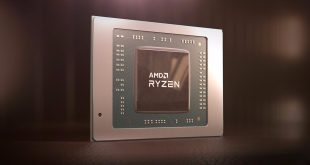While Advanced Micro Devices has plenty of troubles today, it looks like the company could be hit by problems from the past, which are associated with the launch of its code-named “Llano” accelerated processing unit. AMD may have to pay damages to parties, which bought the company’s shares between April, 2011, and October, 2012.
The plaintiffs accuse AMD management of concealing slow ramp of its code-named “Llano” accelerated processing unit because of poor yields and other issues at GlobalFoundries with 32nm silicon-on-insulator (SOI) with high-k metal gate (HKMG) process technology, reports Reuters news-agency. The investors also believe that AMD’s management in 2011 mis-executed product launch and ramp up as well as co-operation with makers of mainboards. As a result, in 2012 the company had to write down $100 million of “Llano” inventory as not saleable.
AMD’s “Llano” was the company’s first high-performance APU with K10.5 “Husky” x86 cores and integrated Radeon graphics based on the TeraScale 2 architecture (which used VLIW5 compute units). The processing units featured FM1 form-factor. The chips, which were once supposed to be released in late 2010, were delayed to mid-2011.
When the production started in April, 2011, it quickly turned out that GlobalFoundries could not manufacture enough APUs for the market using 32nm SOI fabrication process. As a result, AMD had to ship the chips only to large partners among PC makers. The company’s management at the time declined any issues with availability or manufacturing technology.
Since AMD’s “Llano” APUs in FM1 form-factor were almost not available in the channel, makers of mainboards produced appropriate platforms in very low quantities. As a result, when AMD could finally start volume shipments of “Llano” in late 2011 – early 2012, there were no mainboards for the APUs. When mainboard makers and AMD made the first-gen accelerated processing units and platforms available, it was too late.
AMD released its new-generation “Trinity” APU in FM2 form-factor in mid-2012. Since the “Trinity” chips were more powerful than previous-gen offerings, demand for “Llano” dropped sharply and in the third quarter of that year AMD had to write down massive amount of “Llano” inventory. As a consequence of the write down, AMD’s stock price dropped nearly 74 per cent from a peak of $8.35 in March 2012 to a low of $2.18 in October 2012.
A federal judge in Oakland, California, ruled that AMD must face claims that it committed securities fraud by hiding problems with “Llano”. The court case seeks damages on behalf of the Arkansas Teacher Retirement System, Belgium-based KBC Asset Management and other investors who bought the company's shares between April 2011 and October 2012. Jonathan Gardner from Cohen Gardner LLP represents plaintiffs in this case against AMD. This is not the only class-action lawsuit filed by AMD investors in connection with “Llano” write downs. Another class-action against the chip designer was commenced by Robbins Geller Rudman & Dowd LLP in early 2014.
Discuss on our Facebook page, HERE.
KitGuru Says: While a federal judge in Oakland, California, ruled that AMD must face a trial, this does not necessarily mean that the company will be found guilty. Moreover, there have been so many management changes at AMD in the recent years that people, who had the reigns in 2011, are no longer with AMD. Will be the lessons be learned? Hardly, companies just do not ever say anything negative about their products.
 KitGuru KitGuru.net – Tech News | Hardware News | Hardware Reviews | IOS | Mobile | Gaming | Graphics Cards
KitGuru KitGuru.net – Tech News | Hardware News | Hardware Reviews | IOS | Mobile | Gaming | Graphics Cards




All this because of stock drops, man you you buy stocks you have to know that theres a risk of loosing, don’t blame others for you lack of investment insight.
Indeed, there should be clear statutes to let these morons know that investment is gambling, no protection whatsoever, you do your own homework and hedge bets on which company will do well and then invest. Concealing yields or ramp details is the company’s right, no one needs to or has the right to know that other than the company’s employees. These moron shareholders who have lots of money to invest (read: waste) don’t deserve to have it in the first place, bedsides it came from the pockets of under paid employees and other down trodden company folk so the least we should do is get these clowns to rid of that money because they sure don’t seem fit to have it.
That is not the issue, the issue is that critical information was withheld.
“The company’s management at the time declined any issues with availability or manufacturing technology.”
Basically, if AMD was being transparent, the stocks would not have been bought, resulting in large amounts of money NOT being lost.
Anyone with a clue knows that AMD has had execution issues for 20+ years so it’s absurd to file a lawsuit claiming AMD committed fraud when they continued to extend the delivery time out on Llano. This lawsuit is just gamblers looking to reap profits from a bad gamble. These people failed to perform due diligence. There was no fraud IMO. Many people have lost money on AMD stock including me but they didn’t use late delivery of a new product to claim fraud to dupe the courts into rewarding them for a bad investment.
All AMD investment documents clearly state that past performance is not an indicator of future performance and that all roadmaps are subject to change. Roadmaps are goals not guarantees. Using the same baseless logic one could file a lawsuit for Bulldozer which was 2-3 years late and a poor performer per watt. IMO, there is no merit to this bogus lawsuit.
◔❧❧◔❧❧◔86$ PER HOUℛ@ai6:
Going Here you
Can Find Out,,,,,
►►►► >>>https://WorkOnlineLink.biz/EarnS/Planes….
★★★★★★★★★★★★★★★★★★★★★★★★★★★★★★★★★
+Gordon said what everyone knows, so if the investors didn’t knew that it’s a problem of their own, when you invest you have to research before, because amd isn’t directly responsible for their manufacturing partners and thir problems with execution, we are talking about chips that everyone with knowledge in technology knows that every now and then has a “bad patch” and the delays that come from it….
Bottom line is that when you invest there is risks, and it is your job to evaluate them and decide whether to invest or not, and that excuse of “witheld information” is total bullshit averyone knows AMD allways had problems with execution so there is no witholding in there… And read Gordon last 4 lines and you will get it why investors are not ellegible for refund.
….One quick, sure, & simple way to solve this debate; Lets see how honest they have been in their personal lives…..